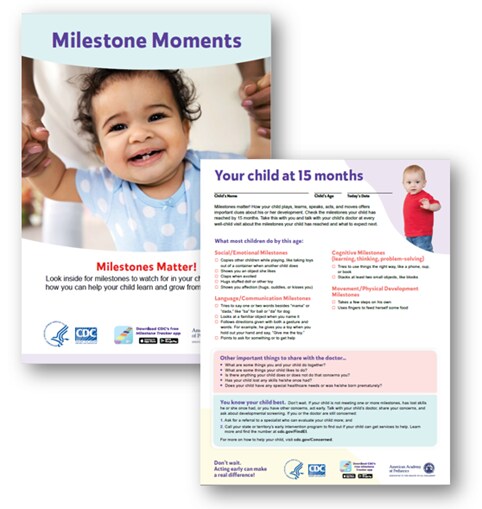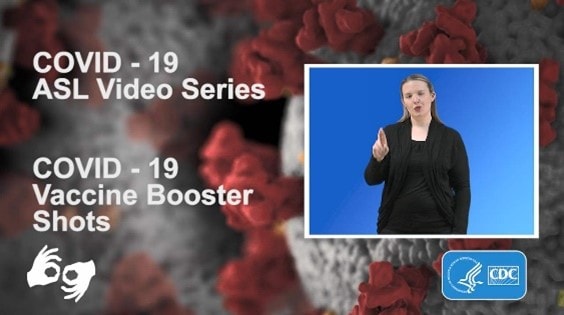DHDD Newsletter – February 2022
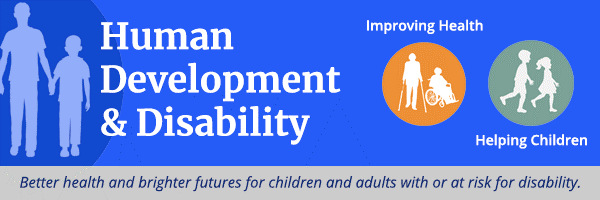
A Note from the Acting DHDD Director
Dear DHDD Partners,
I hope you are all doing well and staying healthy. DHDD has been very busy this month. We have a number of new and informative publications on a variety of topics ranging from children’s mental health to toileting resistance among preschool-age children with and without autism.
As you will note in the newsletter, DHDD continues to partner with the COVID-19 response to develop and post American Sign Language (ASL) videos on a variety of COVID-19 topics. Several new videos, in English and Spanish ASL, have been posted. Please share these resources with your networks.
Best,
Blythe
In the Spotlight
CDC Releases Revised Developmental Milestones and Tips to Support Development
The Centers for Disease Control and Prevention (CDC) is pleased to announce the release of revised developmental milestones and tips to support early child development. Since 2004, CDC’s “Learn the Signs. Act Early.” program has offered developmental milestone checklists and other free materials to help caregivers track children’s milestones and take action on early developmental concerns. Recently, the materials, and nearly all of the developmental milestones within them, have been revised to make them even more useful, relevant, and timely.
Here is what’s new:
- Developed 15- and 30-month milestone checklists
- Milestones are at the age most (75% or more) children would be expected to achieve them
- Revised and expanded the tips and activities to support children’s development for all ages
- Added open-ended questions to help facilitate conversations with healthcare providers and others
- “Red flags/warning signs” are now embedded within the milestones to reduce confusion about when to take action on missing milestones
- Redesigned the Milestone Moments booklet, adding a new screening “passport”, and refreshed the design of the milestone checklists, promotional milestones brochure, and gameboard poster
View the updated milestones at www.cdc.gov/Milestones
Download the new materials at www.cdc.gov/ActEarly/Materials, and
Download your Milestone Tracker App from your app store today!
Questions about these changes? Email ActEarly@cdc.gov
New Resources
March 3rd is World Hearing Day!
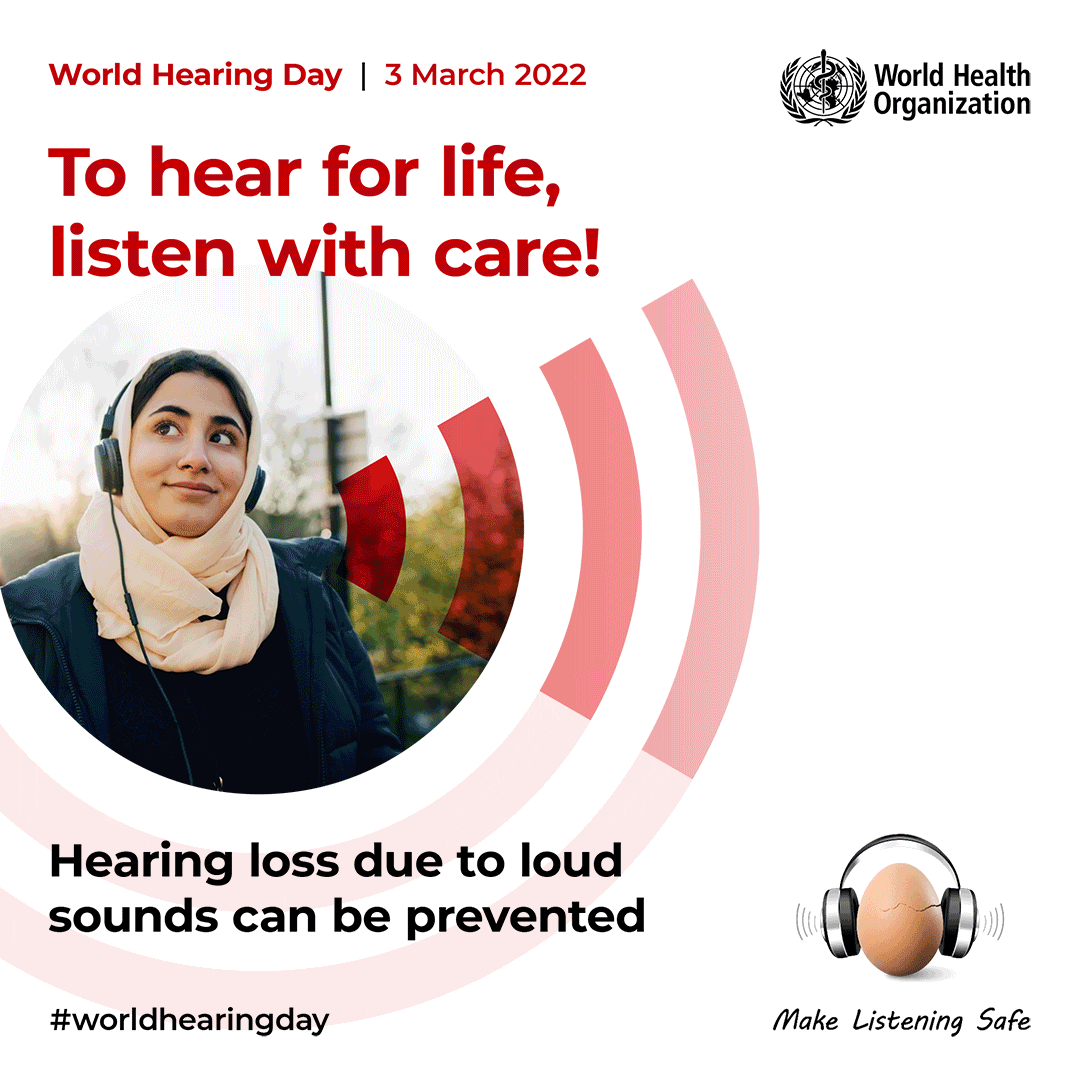
Last year as part of the recognition of World Hearing Day, WHO published the World Report on Hearing focusing on the prevention, identification, and rehabilitation of hearing loss. As hearing screening forms a foundation and an integral part of this strategy, WHO subsequently published “Hearing Screening: Considerations for Implementation” in September 2021. This year’s approaching World Hearing Day will be observed on March 3, 2022 with the theme “To hear for life, listen with care” which advocates for good hearing across the life course.
Join Us for an Act Early Network Quarterly Webinar!
The 4 Steps to Early Identification in a Special Population: Leveraging Project SCOPE to Support Families of Young Children
A webinar, to be held on March 7, 2022 at 1:00 PMEST, will highlight the work of the Project SCOPE (Supporting Children of the Opioid Epidemic) National Training Initiative to integrate “Learn the Signs. Act Early.” resources and tools into the curriculum used in 14 states. Project SCOPE uses the ECHO model to increase the knowledge and skills of interdisciplinary audiences (e.g., early childhood educators, early interventionists, therapists, public health professionals) who work with children with prenatal opioid exposure and other related trauma exposures and their caregivers.
Please Note:
- There is no cost for this webinar.
- CEUs are not offered for this webinar.
- You can test your connection to Zoom prior to the scheduled time by visiting this test webpage.
- For disability accommodations e-mail aucdinfo@aucd.org.
- This webinar will be archived.
CDC COVID-19 ASL Videos Now Available Online
New and updated CDC COVID-19 American Sign Language (ASL) videos, in English and Spanish, have posted to CDC’s #COVID-19 ASL playlist. These new videos cover the topics of interpreting a positive self-test, booster shots, and vaccines for children ages 5 -11 years. Please share with your networks!
CDC Updating COVID-19 Web Page
The CDC COVID-19 Response has updated the list of certain medical conditions that put people at higher risk of getting very sick from COVID-19. This list has been expanded to include some additional disabilities that are supported by new CDC-led systematic reviews.
FEMA Seeks New Members for National Advisory Council
FEMA is seeking qualified individuals to lend their expertise and serve on the agency’s National Advisory Council.
The National Advisory Council includes a geographically diverse and substantive cross-section of 35 members who advise the FEMA Administrator on all aspects of emergency management, ensuring input from and coordination with state, local, tribal and territorial governments, as well as the private and nonprofit sectors. Individuals appointed to the council bring their experience and diversity of views to provide the Administrator consensus recommendations on a broad range of issues.
Administrator Criswell will appoint up to 14 members who will begin serving on the council in December 2022. Selected council members will guide future recommendations on topics including equity, climate, readiness, and workforce. The agency is accepting applications for 11 discipline-specific positions and three Administrator-selected positions. Discipline-specific positions include climate change, cybersecurity, disabilities, access, and functional needs, elected state officials, emergency management, emergency medical provider, non-elected local official, non-elected state government officials, public health, and standards setting and accrediting. For more information about what each position entails, please see the council’s charter.
Supporting her commitment to address climate adaptation, Administrator Criswell directed the council’s charter to be updated to include climate change experts. The first climate expert began serving in December 2021. This recruitment announcement includes solicitation of a second climate expert. Newly selected members will serve up to a three-year term on the council. If other positions open during the application and selection period, FEMA may select qualified candidates from the pool of applications.
If you are interested in applying to serve on the National Advisory Council, please follow these instructions for submitting an application package no later than 11:59 p.m. ET March 31.
Publications
Toileting Resistance Among Preschool Age Children With and Without Autism Spectrum Disorder

Toileting resistance is more common among children with autism (49.1%) than children with other developmental Findings from a new CDC study show that almost half (49%) of children with autism resist toilet training, which is significantly more than children with other developmental delays (24%) and children from the general population (8%). Diarrhea, constipation, language delays, and problems with social motivation and ability to pick up on social cues were related to toileting resistance among children with autism. These findings may facilitate discussions between parents and providers about effective treatments for conditions that may place children with autism at increased risk for toileting resistance.
Severe Outcomes, Readmission, and Length of Stay Among COVID-19 Patients with IDD
A new CDC study adds evidence to consider individuals with intellectual and developmental disabilities (IDD) as a high-risk population to prioritize for vaccines and emerging therapies. Authors found that among hospitalized COVID-19 patients, there was an increased risk of severe COVID-19 outcomes, readmission, and longer hospital stays among patients with IDD, compared to those without IDD.
Children’s Mental Health: Understanding an Ongoing Public Health Concern

A new report on children’s mental health used data from 9 different sources to describe mental health and mental disorders in children during 2013–2019. This report is a collaboration of the Centers for Disease Control and Prevention with other federal agencies including the Health Resources and Services Administration, the Substance Abuse and Mental Health Services Administration, and the National Institute of Mental Health. It represents an update to the first ever cross-agency children’s mental health surveillance report in 2013.
The new report found that poor mental health among children was a substantial public health concern even before the pandemic. Attention-deficit/hyperactivity disorder (ADHD) and anxiety among children of all ages, and symptoms related to depression among adolescents, are the most common concerns. More information on positive indicators of mental health such as emotional well-being and resilience is needed to truly understand children’s mental health.
Evidence-Informed Milestones for Developmental Surveillance Tools
In partnership with CDC, the American Academy of Pediatrics (AAP) identified and convened eight early childhood developmental experts. These experts established criteria for revising “Learn the Signs. Act Early.” milestones and conducted a comprehensive literature review, cross-referenced with current developmental resources, to inform the revisions. Read more about the process for updating the milestones and watch a video abstract by the lead author here.
Association Between Self-Reported Disability and Lifetime History of Traumatic Brain Injury with Loss of Consciousness Among Veterans and Nonveterans in North Carolina

Compared with civilians, service members and veterans who have a history of traumatic brain injury (TBI) are more likely to experience poorer physical and mental health. To investigate this further, this article examines the association between self-reported history of TBI with loss of consciousness and living with 1 or more current disabilities (ie, serious difficulty with hearing, vision, cognition, or mobility; any difficulty with self-care or independent living) for both veterans and nonveterans.
Sensory features in autism: Findings from a large population-based surveillance system

A new study using the Autism Developmental Disabilities Monitoring (ADDM) Network data found that 74% of 4- and 8-year-old children with autism demonstrated sensory features, which are differences in how they respond to sensation (such as sounds, smells, and textures). The presence of sensory features was associated with hyperactivity, aggression, fear, sleep disruption, and eating problems. The presence of sensory features was associated with delays in daily living skills and physical and emotional development. Sensory features were more common among boys, non-Hispanic white children, and children of mothers with more years of education, suggesting potential disparities.
Factors Associated with Early Intervention Intensity for Children Who Are Deaf or Hard of Hearing
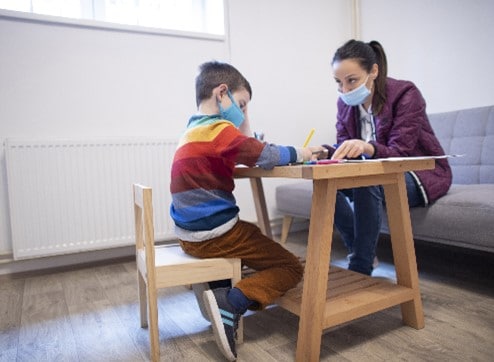
A new CDC-funded study recently published in the journal Children looks at factors associated with intervention intensity, or the duration of services received during enrollment, among children who are deaf or hard of hearing (D/HH). The children included in the study were born between 2008 and 2014 and were enrolled in Ohio’s Part C early intervention (EI) programming. More than half (60%) of children received four or more different EI services and the median service intensity was about 138 minutes per month for all years of enrollment. Researchers found that children who received higher intensity services were those with severe hearing loss, bilateral hearing loss, presence of a disability, and those enrolled in EI at later ages. Evaluating intervention intensity broadens our understanding of effective components of state-based programs that support the developmental needs of children who are D/HH.
